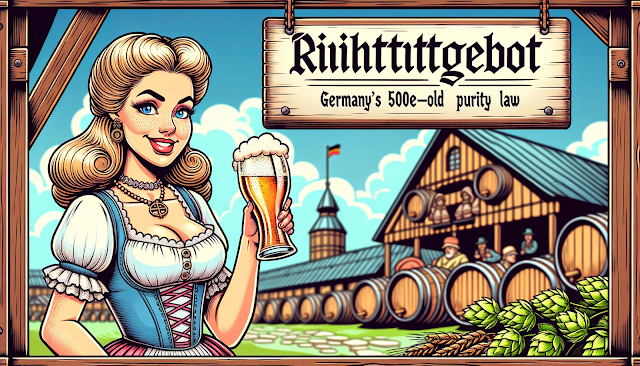The Role of Amylase in Mashing
Amylase is not merely an enzyme; it's a protein that acts as a catalyst for biochemical reactions, allowing them to occur efficiently at temperatures congenial for living organisms — in this case, the yeast that is central to brewing. It’s a pivotal character in the narrative of brewing, ensuring the conversion of starches in malt into soluble sugars, thus setting the stage for fermentation.Understanding the functionality of amylase provides the home brewer with a powerful tool to manipulate the fermentability of their wort. Control over this aspect means more than just steering the brewing process; it means the power to craft a beer with desired characteristics by controlling the enzyme activity.
Enzymes: The Unsung Heroes in Human Biology and Brewing
While discussing brewing, it’s essential to recognize the broader biological importance of enzymes like amylase. They are indispensable in human life, catalyzing and accelerating chemical reactions within cellular structures. Amylase, alongside lipase, is instrumental for a healthy digestive system and metabolism, beginning its work right in our mouths where the digestion process kickstarts.Attenuation: The Gateway to Alcohol
For brewers, amylase is the key to efficient attenuation - the process by which yeast consumes sugars, producing alcohol as a result. High attenuation means more sugars are converted into alcohol, a desirable outcome in brewing. It’s like saying, "I'm a hungry enzyme," ready to break down complex carbohydrates into simpler sugars.Alpha and Beta Amylase: The Dynamic Duo
The brewing mash is a stage for two types of amylase: alpha and beta. Together, they break down starch molecules — complex chains of glucose — into smaller, fermentable sugars. Alpha-amylase attacks starch chains internally, producing a range of sizes of sugar molecules. Then, beta-amylase takes over, further reducing these chains primarily into maltose, along with glucose and maltotriose. Glucoamylase can also join the party, performing a similar role to beta-amylase.These processes are most effective when the wort is pH balanced and at an optimal temperature, creating a conducive environment for the enzymes to perform.
Strategic Addition of Amylase
The timing and temperature are crucial for the efficacy of amylase. Brewers generally introduce the enzyme to the mash either immediately after mixing in the strike water or partway through an extended mash process. The ideal temperature for amylase action is between 150-155°F; exceeding this range risks denaturing the enzyme.Maintaining the right temperature for about an hour allows for complete starch conversion before cooling the mash down for fermentation. The temperature control plays a dual role: lower temperatures favor higher alcohol content, while higher temperatures result in a fuller mouthfeel, due to the presence of unfermentable sugars.
The pH Factor in Enzymatic Efficiency
The pH level is another critical factor that influences enzyme activity, and by extension, the entire brewing process. It affects not just the efficiency of the enzymes but also the effectiveness of hops and the fermentation performance of yeast. Brewers use meters to test the pH levels, making adjustments as necessary to optimize the brewing conditions.Beyond the Mash: Taste Implications
There's an ongoing debate among brewing aficionados regarding whether the use of amylase influences the taste profile of the beer. While the primary role of amylase is to facilitate the breakdown of starches, subtle alterations in the process can result in different flavor nuances, contributing to the complex taste landscape of the final brew.The mastery of amylase use in brewing is both a science and an art. It requires a deep understanding of biochemical processes, as well as a nuanced approach to crafting the desired beer profile. From the pH levels to the precise temperature windows, every detail counts in the pursuit of the perfect pint. The savvy brewer, equipped with this knowledge, can experiment and innovate, pushing the boundaries of traditional brewing to create unique and memorable beers.






